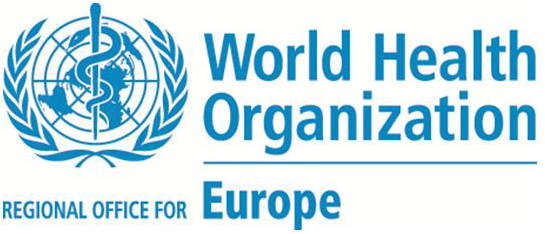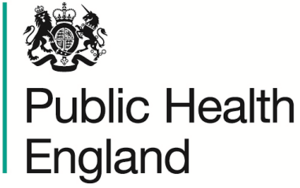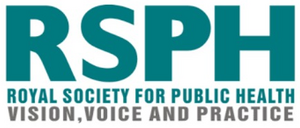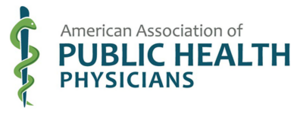THR Statements: Difference between revisions
Richardpruen (talk | contribs) No edit summary |
Richardpruen (talk | contribs) No edit summary |
||
| Line 17: | Line 17: | ||
[[file:THR_Statements_html_1b5c55f049f30bf5.png]] | [[file:THR_Statements_html_1b5c55f049f30bf5.png|thumb|center]] | ||
| Line 29: | Line 29: | ||
[[file:THR_Statements_html_a0548a0d52b03426.png]] | [[file:THR_Statements_html_a0548a0d52b03426.png|thumb|center]] | ||
| Line 38: | Line 38: | ||
[[file:THR_Statements_html_5bff3fffb7427490.png]] | [[file:THR_Statements_html_5bff3fffb7427490.png|thumb|center]] | ||
| Line 47: | Line 47: | ||
[[file:THR_Statements_html_598db578a2cee568.png]] | [[file:THR_Statements_html_598db578a2cee568.png|thumb|center]] | ||
| Line 56: | Line 56: | ||
[[file:THR_Statements_html_dabccb8e3c1d331a.png]] | [[file:THR_Statements_html_dabccb8e3c1d331a.png|thumb|center]] | ||
| Line 65: | Line 65: | ||
[[file:THR_Statements_html_49a5df33bae2db03.png]] | [[file:THR_Statements_html_49a5df33bae2db03.png|thumb|center]] | ||
| Line 71: | Line 71: | ||
[[file:THR_Statements_html_69a426a8224c4e50.png]] | [[file:THR_Statements_html_69a426a8224c4e50.png|thumb|center]] | ||
| Line 80: | Line 80: | ||
[[file:THR_Statements_html_29f909e9d24ba098.png]] | [[file:THR_Statements_html_29f909e9d24ba098.png|thumb|center]] | ||
| Line 89: | Line 89: | ||
[[file:THR_Statements_html_7473f9a7ceaeeb5f.png]] | [[file:THR_Statements_html_7473f9a7ceaeeb5f.png|thumb|center]] | ||
| Line 98: | Line 98: | ||
[[file:THR_Statements_html_a290328394afb8a2.png]] | [[file:THR_Statements_html_a290328394afb8a2.png|thumb|center]] | ||
| Line 107: | Line 107: | ||
[[file:THR_Statements_html_3dc9120068dc83b.png]] | [[file:THR_Statements_html_3dc9120068dc83b.png|thumb|center]] | ||
| Line 116: | Line 116: | ||
[[file:THR_Statements_html_3ef1301d4464ee23.png]] | [[file:THR_Statements_html_3ef1301d4464ee23.png|thumb|center]] | ||
| Line 125: | Line 125: | ||
[[file:THR_Statements_html_ffa345863d98e7b8.png]] | [[file:THR_Statements_html_ffa345863d98e7b8.png|thumb|center]] | ||
| Line 137: | Line 137: | ||
[[file:THR_Statements_html_1afcfe7142c5ebc9.png]] | [[file:THR_Statements_html_1afcfe7142c5ebc9.png|thumb|center]] | ||
| Line 146: | Line 146: | ||
[[file:THR_Statements_html_24f85310b5cb58d9.png]] | [[file:THR_Statements_html_24f85310b5cb58d9.png|thumb|center]] | ||
| Line 155: | Line 155: | ||
[[file:THR_Statements_html_7f5f1e90da0bd313.png]] | [[file:THR_Statements_html_7f5f1e90da0bd313.png|thumb|center]] | ||
| Line 164: | Line 164: | ||
[[file:THR_Statements_html_afc4fd7e248bd3e3.png]] | [[file:THR_Statements_html_afc4fd7e248bd3e3.png|thumb|center]] | ||
| Line 185: | Line 185: | ||
[[file:THR_Statements_html_3fae28c626911bcf.png]] | [[file:THR_Statements_html_3fae28c626911bcf.png|thumb|center]] | ||
| Line 194: | Line 194: | ||
[[file:THR_Statements_html_53a2a795647b3b8.png]] | [[file:THR_Statements_html_53a2a795647b3b8.png|thumb|center]] | ||
| Line 203: | Line 203: | ||
[[file:THR_Statements_html_6ad6101eafe7576d.png]] | [[file:THR_Statements_html_6ad6101eafe7576d.png|thumb|center]] | ||
| Line 221: | Line 221: | ||
[[file:THR_Statements_html_4fa2762d2f9442aa.png]] | [[file:THR_Statements_html_4fa2762d2f9442aa.png|thumb|center]] | ||
| Line 239: | Line 239: | ||
[[file:THR_Statements_html_40771489b23953e1.png]] | [[file:THR_Statements_html_40771489b23953e1.png|thumb|center]] | ||
| Line 248: | Line 248: | ||
[[file:THR_Statements_html_2812601031ef4a1e.png]] | [[file:THR_Statements_html_2812601031ef4a1e.png|thumb|center]] | ||
| Line 257: | Line 257: | ||
[[file:THR_Statements_html_72598139af7b6d79.png]] | [[file:THR_Statements_html_72598139af7b6d79.png|thumb|center]] | ||
| Line 266: | Line 266: | ||
[[file:THR_Statements_html_6eef46d956bfbd59.png]] | [[file:THR_Statements_html_6eef46d956bfbd59.png|thumb|center]] | ||
| Line 275: | Line 275: | ||
[[file:THR_Statements_html_754b89f8653ea1ae.png]] | [[file:THR_Statements_html_754b89f8653ea1ae.png|thumb|center]] | ||
| Line 284: | Line 284: | ||
[[file:THR_Statements_html_3e642e160ed3c4d5.png]] | [[file:THR_Statements_html_3e642e160ed3c4d5.png|thumb|center]] | ||
'''Canadian Heart & Stroke Foundation:<span></span>'''“[https://www.heartandstroke.ca/-/media/pdf-files/position-statements/ecigarettesincanada.ashx?la=en&hash=8939FF52C37A5E11C551176982F2E4AC5D38D605 Emerging evidence demonstrates that e-cigarettes are less harmful than conventional cigarettes. Through the legalization of e-cigarettes containing nicotine, there is improved access to e-cigarettes for current smokers, therefore allowing adults more choice around alternative methods of nicotine intake and/or tobacco cessation. ...Those unable to quit smoking would be better off using e-cigarettes over the long-term, rather than continuing to smoke regular cigarettes].” | '''Canadian Heart & Stroke Foundation:<span></span>'''“[https://www.heartandstroke.ca/-/media/pdf-files/position-statements/ecigarettesincanada.ashx?la=en&hash=8939FF52C37A5E11C551176982F2E4AC5D38D605 Emerging evidence demonstrates that e-cigarettes are less harmful than conventional cigarettes. Through the legalization of e-cigarettes containing nicotine, there is improved access to e-cigarettes for current smokers, therefore allowing adults more choice around alternative methods of nicotine intake and/or tobacco cessation. ...Those unable to quit smoking would be better off using e-cigarettes over the long-term, rather than continuing to smoke regular cigarettes].” | ||
Revision as of 18:38, 13 January 2021
All statements are hyperlinked to original documents. >35 organizations say “SAFER than smoking.”

World Health Organization EURO Office:“There is conclusive evidence that: Completely substituting electronic nicotine and non-nicotine delivery systems for combustible tobacco cigarettes reduces users’ exposure to numerous toxicants and carcinogens present in combustible tobacco cigarettes.”

International Agency for Research on Cancer:“The use of e-cigarettes is expected to have a lower risk of disease and death than tobacco smoking… E-cigarettes have the potential to reduce the enormous burden of disease and death caused by tobacco smoking if most smokers switch to e-cigarettes.”

FINDINGS:“Moderate certainty” that “e-cigarettes with nicotine increase quit rates compared to e-cigarettes without nicotine, and compared to nicotine replacement therapy [nicotine patches & gum… We did not detect any clear evidence of harm from nicotine e-cigarettes” [up to 2 years]].”



National Institute for Health and Care Excellence:“The evidence suggests that e-cigarettes are substantially less harmful to health than smoking but are not risk free. Many people have found them helpful to quit smoking cigarettes.”




Royal College of General Practitioners:“The evidence so far shows that e-cigarettes have significantly reduced levels of key toxicants compared to cigarettes, with average levels of exposure falling well below the thresholds for concern.”


Stroke Association UK:“Current evidence shows that the risk to health posed by e-cigarettes in the short term is likely to be considerably less compared to smoking.”

Action on Smoking and Health UK:“It has been estimated that e-cigarettes are 95% less harmful than ordinary cigarettes. There is negligible risk to others from second-hand e-cigarette vapour. ...The lifetime cancer risk of vaping has been assessed to be under 0.5% of the risk of smoking. [But Public understanding of the relative harms of e-cigarettes [vs smoking cigarettes] have worsened over time and are less accurate today than they were in 2014.]”

National Centre for Smoking Cessation and Training:“Experts estimate that e-cigarettes are, based on what we know so far, around 95% safer than cigarettes. Smoking is associated with a number of very serious health risks to both the smoker and to others around them. Therefore, smokers who switch from smoking tobacco to e-cigarettes substantially reduce a major risk to their health. ...Nicotine does not cause smoking related diseases, such as cancers and heart disease.”

National Health Service Scotland consensus statement on e-cigarettes:“Smoking kills. Helping people to stop smoking completely is our priority. …There is now agreement based on the current evidence that vaping e-cigarettes is definitely less harmful than smoking tobacco.”
This statement was created and endorsed by: Action on Smoking & Health Scotland • Cancer Research UK • Chest Heart & Stroke Scotland • Chief Medical Officer for Scotland • NHS Ayrshire and Arran • NHS Greater Glasgow and Clyde • NHS Lothian • NHS Tayside • Roy Castle Lung Cancer Foundation • Royal College of General Practitioners • Royal College of Physicians of Edinburgh • Royal College of Physicians and Surgeons of Glasgow • Royal Environmental Health Institute of Scotland • Scottish Collaboration for Public Health Research and Policy • Scottish Consultants in Dental Health • Scottish Thoracic Society • UK Centre for Tobacco & Alcohol Studies • University of Edinburgh • University of Stirling


Cancer Society of New Zealand:“E-cigarettes and smokeless tobacco products are less harmful than tobacco smoking.”

Royal Australian & New Zealand College of Psychiatrists (RANZCP):“Research in Australia shows that 70% of people with schizophrenia and 61% of people with bipolar disorder smoke compared to 16% of those without mental illness. …RANZCP recognises the potential harm reduction benefits presented by e-cigarettes and vaporisers for people living with mental illness, and the need for legislative reform for these to be realised. The RANZCP therefore recommends: Exemption of nicotine-containing e-cigarettes and vaporisers from the restrictions imposed under the Poisons Standard so that they may be subject to stringent and suitable regulations as consumer products [and lower rates of taxation for e-cigarettes and vaporisers compared to smokable tobacco products to ensure affordability for low-income smokers, and to provide a financial incentive to switch].”

Drug and Alcohol Nurses of Australasia:“People with drug and alcohol dependence have high
smoking rates [and are more likely to die from a tobacco-related disease than from their primary drug problem. E-cigarettes are battery-operated devices that heat a liquid solution, which may or may not contain nicotine into a vapour for inhalation, simulating the behavioural and sensory aspects of smoking, and they are currently seen as a legitimate form of tobacco harm reduction].”
Royal Australian College of Physicians:“The RACP acknowledges that e-cigarettes may have a potential role in tobacco harm reduction and smoking cessation for smokers unable or unwilling to quit.”

German Federal Institute for Risk Assessment:“According to current knowledge, e-cigarettes are less harmful than conventional tobacco products when used as intended.”

French National Academy of Medicine:“It is established that the vaporette is less dangerous than the cigarette… It is therefore preferable for a smoker to vape. Since 2016, the High Authority for Health (HAS) considers it ‘as an aid to stop or reduce the consumption of tobacco by smokers.’ Santé Publique France indicates that at least 700,000 [French smokers have quit using electronic cigarettes. ...Smokers who were about to switch to vaporizing instead of tobacco should not hesitate…]”[Google Translate from original French]

French National Academy of Pharmacy:“The World Health Organization’s [anti-e-cigarette position is incomprehensible. Tobacco is responsible for 73,000 deaths in France. The e-cigarette helps people quit smoking. Its components are obviously less harmful than tobacco.]” [NOTE: This is a Tweet from the Académie Nationale de Pharmacie. Not an official position statement.]
US National Academies of Sciences, Engineering and Medicine:“While e-cigarettes are not without health risks, they are likely to be far less harmful than combustible tobacco cigarettes. There is substantial evidence that... exposure to potentially toxic substances from e-cigarettes is significantly lower compared with combustible tobacco cigarettes.”

US Centers for Disease Control:“E-cigarettes have the potential to benefit adult smokers who are not pregnant if used as a complete substitute for regular cigarettes and other smoked tobacco products.”

American Cancer Society:“Based on currently available evidence, using current generation e-cigarettes is less harmful than smoking cigarettes.” [NOTE: This was the official statement from 2018-2019. As ofNovember 2019, ACS no longer recommends e-cigarettes as a smoking cessation tool. Their stated reason for this change was “e-cigarette use by young people.” Yet their new statement still says, “former smokers now using e-cigarettes should not revert to smoking.” So, obviously, ecigs are LESS HARMFUL.]



Campaign for Tobacco-Free Kids:“E-cigarettes could benefit public health if they help significantly reduce the number of people who use combustible cigarettes and die of tobacco-related disease.”




